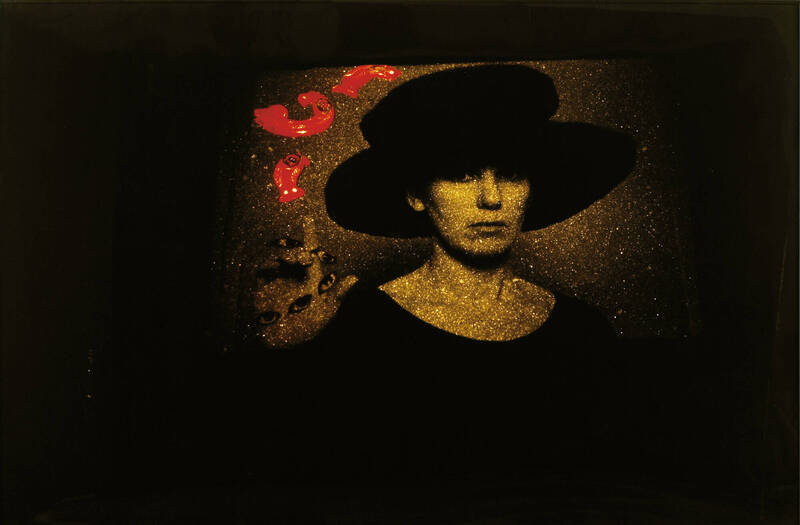Art books like Sight Lines: Women and Art in Aotearoa are such an act of love by writers and publishers due to their highly specialised nature, considerable cost of production and largely uncommercial nature. But they are important. Each one that makes it off the presses and onto the shelves of bookshops and libraries – and onto Art History course reading lists – contributes to the ongoing conversation about the visual arts in Aotearoa.
Of course, each publication reflects the passions and predilections of its writer/editor – in this instance, art historian Kirsty Baker. In the book’s introduction, she argues that it would be impossible and perhaps unhelpful to try to corral every female artist, past and present into a single tome. Later in the book she notes the numerous ‘thematic threads [that]run through the artistic practices gathered in this book’:
The first was a consideration of the way that women artists have interrogated their relationship with land and place. The second, the term woman itself, considering the ways that artists in this book have pushed against gendered limitations, questioning or rejecting the narrow, socially constructed parameters that womanhood and binary understandings of gender have often implied. The third thematic thread was that of speaking back, tracing some of the ways that artists have used their practice to speak back to the exclusions and limits of art history and arts institutions. … As I wrote, another thematic point of connection emerged, echoing from artist to artist to become increasingly persistent. The more I wrote and the more I spoke with the writers and artists who have contributed so generously to this book, the more frequently I began to consider the ways that art-making can play a role in the ways we both care for and transmit knowledge.

Di ffrench, The Useful Idiot and Arnolfini’s Hat, 1984, Cibachrome photograph. Dunedin Public Art Gallery, 42-1996, purchased 1996 with funds from the Dunedin Public Art Gallery Society.
Structurally Sight Lines is broadly arranged chronologically, beginning with an essay – ‘Wahine Māori and the Worlds of Adornment: He toi rakai, he mana wahine, he mana tangata – by the arts of adornment, there is the prestige of women and all people’ – by art historian Ngarino Ellis, which ironically, though unavoidably, features works by men of Wahine Māori. This is followed by an essay focusing on woven artefacts made by unknown Māori women and held in national collections. By the third essay – ‘The Messenger Sisters’ – women as named artists begin to emerge and stake a claim to the creative landscape of Aotearoa as individuals.
This focus on the individual largely sets the tone and intent of Sight Lines, with the occasional exception like the Mataaho Collective who conclude the book. Because there’s such a wealth of material and many artists past and present working over the last hundred years, Baker cannot cover everyone. There are some surprising, though inevitable omissions – Fiona Pardington, Seraphine Pick, Yvonne Todd and Christine Webster, for example – but also some really interesting inclusions like Margaret Matilda White, Teuane Tibbo and Ngahuia Harrison.

Pauline Rhodes, Harbour Tripods, 2019, temporary installation, dimensions variable. Courtesy of the artist.
Baker also hasn’t attempted to encapsulate the entire careers of some of the senior artists included here, choosing instead to focus on just a small cross section of work from their often long and prolific careers. Because of this necessary containment, the essay on photographic artist Fiona Clark, for example, is a detailed look at the early 1980s work she did in partnership with Te Atiawa: this protested the proposed discharge of pollution by the Motunui Synthetic Fuels plant into customary kaimoana collection sites along the Taranaki coastline. Clark’s groundbreaking work in the 1970s photographing queer communities, which at that time were still illegal, is absent. This is a shame, particularly because the queer voice in Sight Lines, while present, is very muted. By contrast the essay devoted to Yuki Kihara takes a more wide-ranging look across the past two decades of work, examining the Salome character central to a number of Kihara’s series, and for this reason feels like a representation of their long and successful visual arts career.
The majority of the essays are written by Baker with contributions by Māori art historians/curators Ellis, Chloe Cull, Rangimarie Sophie Jolley, Hanahiva Rose, Huhana Smith and Megan Tamati-Quennell, with Lana Lopesi and Ioana Gordon-Smith doing the heavy lifting for the Moana art historians. Baker, who is Scottish, is the only Pākehā writer across the entirety of Sight Lines. This is unusual unless the book in question is specifically about contemporary Māori and/or Pacific art which Sight Lines is not. (It has a near equal number of Māori and Pākehā artists, with Moana artists very much bringing up the rear.) It’s interesting to see just how well Māori women in particular have done in the field of visual arts not just as makers but as curators and critics.
Sight Lines is undoubtably an art lover’s book that’s been written by art historians: the essays on the whole are, unsurprisingly, art-centric with their use of highly specialised language and extensive descriptions of art works. However, a few essays break with this, like Baker’s writing on Merata Mita with its very necessary social history of Aotearoa and its recent political protests. Other examples are Chloe Cull’s lively take on the challenges and sheer joy experienced by Elizabeth Ellis (née Mountain) and Mere Lodge at art school in the 1960s, and Huhana Smith’s essay about Turumeke Harrington which describes the artist’s personal life, their successes and personal trials and tribulations. These glimpses into the lives of artists and what it takes to survive, live and ultimately flourish as a maker, bring the work to life and the artist out from behind the work.

Turumeke Harrington, Gently Ribbed, installation view, 2022, nylon, steel, aluminium, dimensions variable. Photograph by Nancy Zhou, courtesy of the artist and Centre of Contemporary Art Toi Moroki, Ōtautahi Christchurch.
While Sight Lines is by no means – and does not claim to be – a completist history of women and art in Aotearoa, this very handsome book goes an impressive distance in bringing a number of artists who may be less known outside the rarified of world of the visual arts – compared with, say, an artist like Lisa Reihana – into the light. This is essential to the continuing kōrero about and between female artists and the female curators who write about and champion them.



